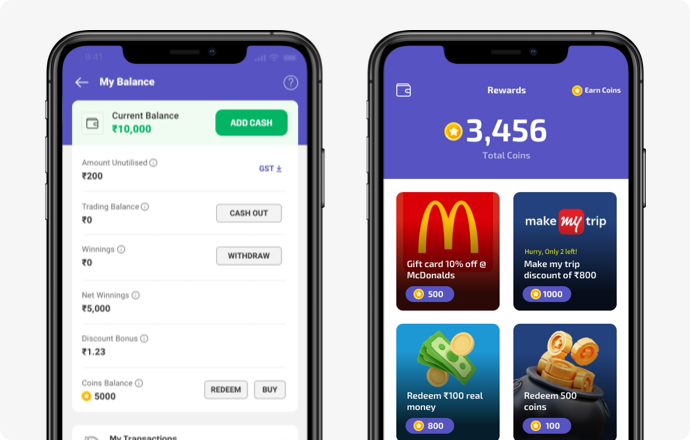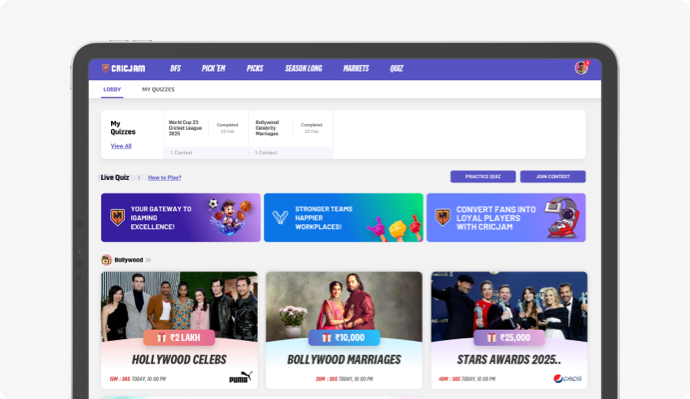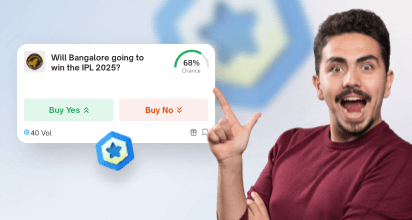Stop Training Fans to Wait for Discounts: A World Cup 2026 Playbook for Football Brands
Football brands don’t need more markdowns—especially with World Cup 2026 coming. See how a free-to-play game layer replaces blanket discounts with event-linked rewards, first-party data, and measurable conversions.
Football brands aren’t losing because fans don’t care. You’re losing margin and momentum because you’re stuck in a loop: same products, same ads, same “20–40% off” banners—again next weekend. With World Cup 2026 on the horizon, this pattern becomes even more costly: CPMs rise, everyone shouts louder, and customers learn to postpone purchases until the next markdown.
There’s a better system: add a free-to-play (F2P) game layer—Predictors, Pick’em, Fantasy Lite, Trivia, Brackets—on top of a unified data-and-rewards backend. Fans play for fun (no purchase necessary), win conditional rewards funded by brands, and come back weekly. You replace blanket discounting with event-linked value that preserves price integrity, grows first-party data, and turns matchday emotion into measurable conversions—perfect timing for World Cup 2026 qualifiers, friendlies, and the tournament itself.
Below is a complete playbook—grounded in risk logic (the “Mattress Mack” lesson), promotions compliance (equal-dignity), and a scalable data engine—so football brands can stop racing to the bottom and start building durable demand.
1) The discount trap—and why it gets worse before World Cup 2026
Discounts feel safe, but they quietly train fans to delay. By World Cup 2026, three headwinds converge
- Higher media costs: more competition around the tournament window.
- Weaker targeting: privacy changes make ad platforms less precise.
- Product sameness: boots, jerseys, tech accessories all look alike at a glance.
Result: you spend more to sell at lower margins—and learn very little about who actually buys. A game layer flips this equation. Instead of begging for attention with price cuts, you earn attention with participation and pay out value only when fans achieve something—a pick that lands, a streak they complete, a trivia win on derby week.
2) What “Mattress Mack” teaches marketers (and how to adapt it for football)
Houston retailer Jim “Mattress Mack” McIngvale tied refunds to sports outcomes—“Buy now; if our team wins, your purchase is free”—and hedged his risk. If the team won, hedges covered refunds and he enjoyed enormous goodwill; if the team lost, he kept the sales and the publicity.
What brands can copy for World Cup 2026
- Outcome-linked rewards: “If your five-match Pick’em lands during the group stage, your jersey is on us (or 50% off).”
- Capped exposure: use prize-indemnity insurance for big prizes; run routine coupons from a pre-set pool.
- Sell participation, not price: fans enjoy the story and suspense; the reward is a celebration, not bait.
You don’t need sportsbooks to do this at scale. You need underwriting logic (price the risk, cap the tail) and compliant promotions (no purchase necessary; equal dignity for free entrants).
3) The fan experience: a catalog, not a one-off
A single game is a campaign. A catalog is a habit—vital for the long runway to World Cup 2026.
- Predictors: scorelines, first scorer, shots on target—perfect for group stages and knockouts.
- Pick’em: choose winners across a Saturday slate or a full matchday.
- Fantasy Lite: micro-squads with 90-second onboarding, ideal for casuals.
- Trivia & Streaks: club history, tactics, player milestones—daily stickiness.
- Brackets & Moments: greatest goals, comeback wins, derby memories.
All are free to play. Winners receive brand-sponsored rewards (coupons, store credits, limited freebies) in a Rewards Wallet. The variety keeps fans engaged between fixtures; the wallet turns tiny wins into a purchase rhythm.

4) The data engine: the Football Fan Intelligence Graph
The real asset lives behind the scenes—a single identity and event stream that converts play into insight
- Identity & Consent: one user record across all games, with explicit opt-ins and deletion flows.
- Engagement Graph: every pick, time-on-task, share, and mini-league join captured as a first-party signal.
- Commerce Signals: reward issuance, redemptions, affiliate attribution, SKU interests.
- Rewards Ledger: issuance, expiry, and breakage by brand; audit-friendly reconciliation.
- Brand Console: cohorts, funnels, heatmaps, and exportable, consented segments.
By the time World Cup 2026 kicks off, you’re not guessing; you’re programming campaigns with known preferences—boots vs. jerseys, live-match vs. pre-match, price sensitivity by reward tier, referral clusters by club.
5) What brands actually gain (and why they renew)
Rewards that feel earned, not cheap.
A 40–50% code won in a predictor feels like a trophy, not a markdown. Average selling price holds; social sharing rises.
First-party intent you can act on.
Know who responds to tactics vs. history; who plays before kickoff vs. at halftime; who converts at 15% off vs. 40% off. Build World Cup 2026 creative that speaks to real behavior.
Budgetable exposure.
Buy fixed sponsorship tiers (title, official, challenge), set capped reward budgets, insure rare “hero” prizes. Treat this like media with performance roots—not open-ended discounting.
Tournament-style digital inventory.
Leaderboard skins, challenge callouts, reward tiles, recap emails, referral surfaces—each sold with post-event proof (impressions → entries → redemptions → revenue).
Lower effective acquisition cost.
You’re paying for engaged minutes and verified redemptions, not scroll-by impressions. And on a shared platform, big brands lift smaller ones—healthier than going solo during World Cup 2026 hype.
6) Sponsorship architecture: scarcity that scales
Mirror stadium economics inside your digital tournament:Wallet
- Principal Sponsor: name on the series, hero banners, top analytics package.
- Official Partners: mid-page presence, reward tiles, email features.
- Challenge Sponsors: rotating branding on predictors/trivia.
- Supporting Brands: performance-only reward inventory with basic analytics.
With a multi-game catalog, you expand inventory without clutter, and each slot carries hard metrics. This is how you fund month-over-month programming from qualifiers through World Cup 2026 finals.
7) Moving from discounts to outcome-linked value (with hedge math that’s practical)
Replace blanket discounts with conditional rewards:
- Outcome-linked: If your three-match pick lands this weekend, take 50% off boots.
- Performance guarantees: “Wear our moisture-wicking jersey for 14 days; if you disagree with the comfort claim, get store credit.”
- Community rewards: “If your club wins, double wallet credits.”
How you control risk:
If a campaign could issue up to $1,000,000 in rewards, and the predicted probability of triggers implies an expected payout of $60,000, you can (a) pre-fund a reserve at that expected level plus buffer, or (b) place prize-indemnity for the tail (e.g., rare perfect-slate wins). Either way, your finance team knows the ceiling before launch.
8) Why a platform (not a single brand) should host this—especially for World Cup 2026
A clever brand promotion is a moment. A platform turns it into a market:
- Network effect: more games → more fans → richer data → better targeting → more sponsors.
- Shared audience: each brand benefits from the next brand’s marketing.
- Calendar gravity: the season itself becomes the programming slate; fans return whether they won last week or not.
- Reusability: the same backend powers predictors, Pick’em, fantasy lite, trivia, brackets. The front end changes; the data spine remains.
Whoever assembles this before World Cup 2026 wins the second screen—then keeps it.

9) Implementation roadmap (60–90 days to go live)
Phase 1: Foundations (2–3 weeks)
- Finalize AMOE/Equal-Dignity templates, rulebooks, and prize workflows.
- Stand up Identity & Consent, Rewards Wallet, and Brand Console v1.
Phase 2: Game Catalog (3–4 weeks)
- Launch Predictor + Pick’em + Trivia for one league and a friendly/tournament window.
- Integrate coupon APIs, affiliate tracking, and insurer onboarding for hero prizes.
Phase 3: Sponsorship & Data (3–4 weeks)
- Package Principal/Official/Challenge tiers; run first co-branded “Challenge Week.”
- Deliver brand-side dashboards (cohorts, funnels, redemption heatmaps).
Phase 4: World Cup 2026 Readiness (ongoing)
- Expand to Fantasy Lite and Brackets.
- Program a 6–8-week tournament slate across groups and knockouts.
- Publish case studies to lock renewals into the tournament window.
10) How you measure progress (real KPIs)
- Fan: WAU/MAU, session length, game plays per user, referral rate, wallet activations.
- Brand: redemption %, assisted revenue, new-to-brand %, cost per engaged user, category interest heatmaps.
- Compliance: AMOE usage visibility, state filings on time, dispute turnaround, data deletion SLA.
By World Cup 2026, you should be reporting these with confidence—proof that participation beats price-cutting.
11) How Vinfotech helps
Games ready now. Predictors, Pick’em, Fantasy Lite, Trivia, Brackets, Moments, Private Leagues—theme able for your leagues and World Cup 2026.
The backend that makes it valuable. Identity & consent, engagement graph, rewards wallet, affiliate connectors, brand console, insurer integrations, admin tools—designed for first-party data and compliance from day one.
Operating muscle. Always-on calendars, inventory planning, creative templates, legal reviews, reporting packs, monthly optimization. We integrate with your stack (Shopify/BigCommerce, affiliate networks, CDPs/CRMs) and tailor UX to partner needs.
Risk discipline. Big moments insured, routine value budgeted, stories that fans share. Finance teams get ceilings; marketers get fuel.
Final word: the World Cup 2026 window won’t wait
Football doesn’t need more ads. It needs participation that teaches you who your fans are. A free-to-play game layer—built with underwriting discipline and equal-dignity compliance—turns matchday emotion into a durable asset for brands. The platforms that move before World Cup 2026 will own the second screen and the first-party data brands crave.
Vinfotech can partner with you to design, launch, and grow this ecosystem—front-end fun for fans, healthy economics for finance, and a data engine brands actually trust.
About Vinfotech
Vinfotech creates world’s best fantasy sports-based entertainment, marketing and rewards platforms for fantasy sports startups, sports leagues, casinos and media companies. We promise initial set of real engaged users to put turbo in your fantasy platform growth. Our award winning software vFantasy™ allows us to build stellar rewards platform faster and better. Our customers include Zee Digital, Picklive and Arabian Gulf League.















